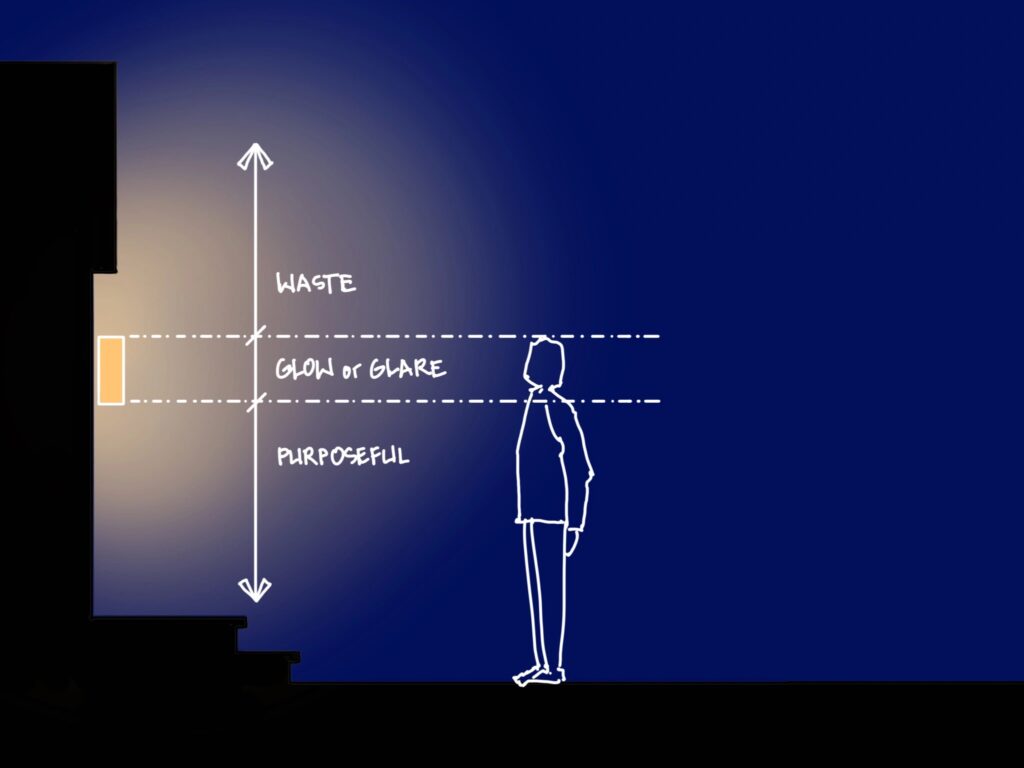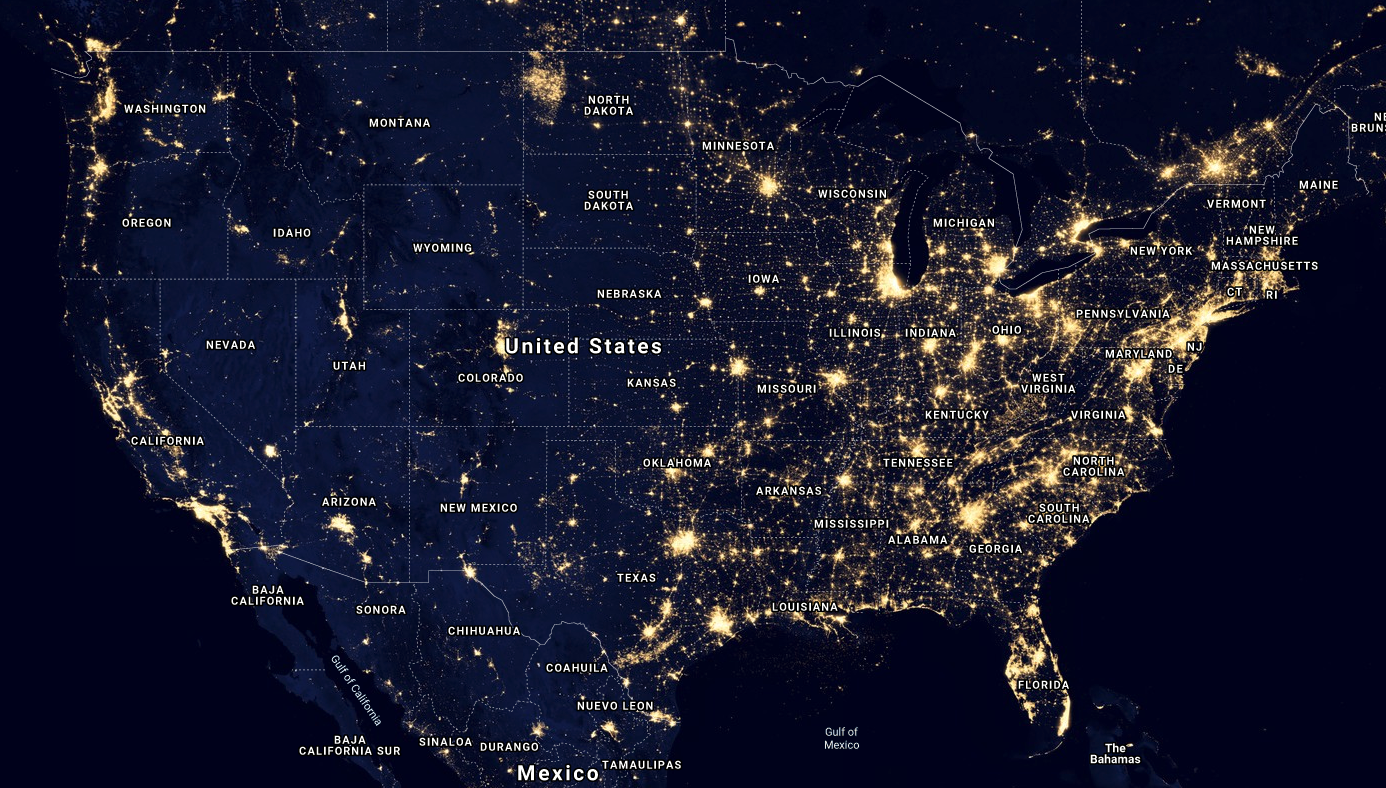When it comes to light, it is hard to tell exactly how much we throw away. The International Dark Sky Association estimates that 35% of lighting energy is wasted making the sky glow. This is energy that has no discernible positive effect on humans, but a huge negative effect on our lives, our wallets, the planet, and the animal kingdom. In essence, we waste 35% of our lighting budget on harmful light.
Just what does it mean to waste light? Every electric light source emits photons, rays of light that travel in a straight line until they hit something like a wall or ceiling or face or automobile. Then some of those photons are reflected back into our eyes and we can see the object as a result.
Go outside of your home and take a look at the light on the front porch, or at the building entrance, or at the garage doors. Emanating from the light are millions of little straight lines of photons, some of them coming straight at your eyes. Where are the others going? Chances are good that the light outside your building looks something like this:

The photons that enter our eye can be either a pleasant soft glow or a harsh bright glare. If the light is too bright, it may make it harder for us to see the steps in front of us. Photons that go below our eyes land on the pavement, the steps, the driveway and become useful light in helping us see where we go.
Everything else is wasted. Any photons that escape up into the sky represent dollars wasted, energy infrastructure unnecessarily burdened, and health disrupted. This is often called light pollution because it disturbs and destroys the natural darkness of the night sky. And most of us live under these conditions every night.
When we drive through the countryside at night, we can see cities and towns miles away because of the glow on the clouds above. When we go outside on a cloudy winter’s night, we can see everything around us because of light bouncing off the clouds. When we try to see the Milky Way or the aurora borealis, we are hampered by random photons released into space by unwitting humans. Us.

Being a lighting designer means I am among the worst offenders. Many of the techniques we use to make buildings and landscapes look great at night are the same techniques that waste the most light. I love the look of spotlights grazing up tree trunks and illuminating the canopy above, but in almost every case some of that light will escape the tree and be lost in space. In the winter, when the tree loses its leaves, the pollution intensifies.
Buildings look stunning with uplighting on columns and architectural features. The dramatic angle of light adds a sense of mystery to a building and draws out the depth of the structure. Yet in most cases, some of this light- or even a majority of it- skips past the building facade and becomes waste, becomes pollution. I even recommended uplighting in previous post. I am guilty. So I’m trying to change.
If you care about money, then you may want to pay attention to how much of it you burn up and send into space with no discernible benefit.
If you care about the planet, then you may want to pay attention to how disruptive your home or workplace is at night to the wildlife nearby.
If you care about yourself, your family, and your neighbors, then you may want to pay attention to how much beauty you steal from them by blotting out the stars. You may want to pay attention to how disruptive those stray photons become when they disturb our ability to get a good nights sleep.
There may be only four kinds of light outdoors: harmful glare, comforting glow, purposeful illumination, and wasted photons. Let’s call them Glare, Glow, Purpose, and Waste.
It’s up to you and me to make smarter choices.
